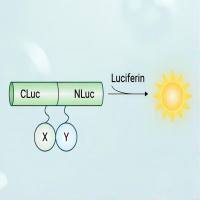Ca2+ Imaging of Intracellular Organelles: Mitochondria
互联网
777
Calcium handling by mitochondria is important both because mitochondria can shape the cytosolic Ca2+
signals and because changes in mitochondrial Ca2+
concentration ([Ca2+
]M
) are important for controlling physiological functions such as respiration or programmed cell death. Accurate measurements
of [Ca2+
]M
require selective location of the Ca2+
probe inside mitochondria and this is best achieved by targeting protein probes to the mitochondrial matrix. Aequorins are
very adequate as Ca2+
probes because: (1) they allow molecular engineering for targeting or for changing the Ca2+
affinity; (2) do not require irradiation for measurements; (3) Ca2+
buffering is small; (4) have a very steep Ca2+
-dependence and a very wide dynamic range, which makes them ideal for detecting and quantifying Ca2+
microdomains. Consumption and low light output are some of its drawbacks that make calcium imaging a hard task. Here, we
describe a procedure that overcomes these disadvantages by combining herpes simplex virus type 1(HSV-1)-based expression of
targeted aequorins with photon-counting imaging. This methodology allows real-time resolution of changes of [Ca2+
]M
by photon counting imaging at the single-cell level. Since HSV virus is neurotrophic, the method is adequate for measuring
[Ca2+
]M
in living neurons.







